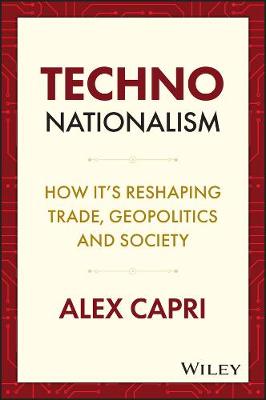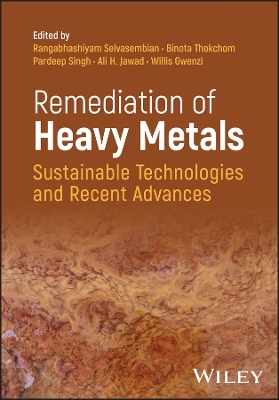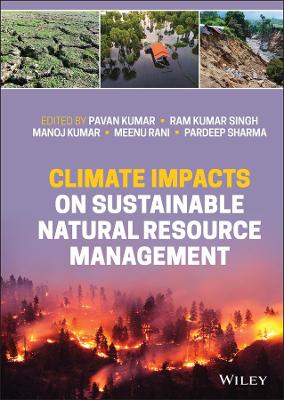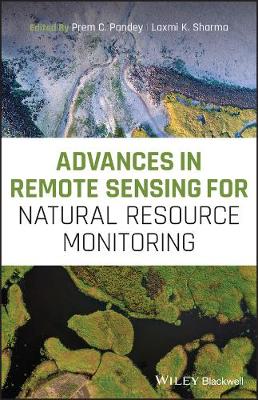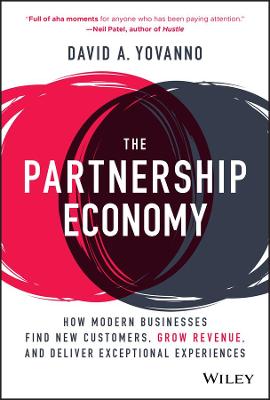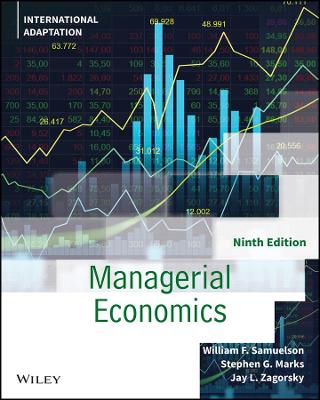Economics and the Environment
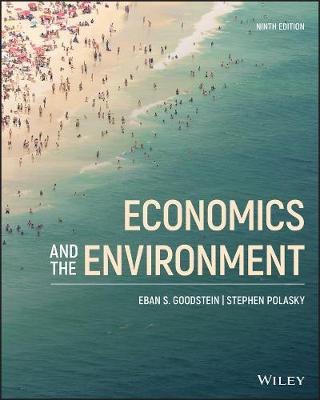 -15%
portes grátis
-15%
portes grátis
Economics and the Environment
Polasky, Stephen; Goodstein, Eban S.
John Wiley & Sons Inc
03/2021
464
Mole
Inglês
9781119693505
15 a 20 dias
838
Introduction 1
1 Four Economic Questions About Climate Change 2
1.1 Introduction 2
1.2 Four Questions 3
1.3 How Much Pollution is Too Much? 6
1.4 Is Government Up to the Job? 11
1.5 How Can We Do Better? 11
1.6 Can We Resolve Global Issues? 14
1.7 Summary 15
Part I How Much Pollution is Too Much?
2 Ethics and Economics 21
2.1 Introduction 21
2.2 Utility and Utilitarianism 22
2.3 Social Welfare 24
2.4 Summary 26
3 Pollution and Resource Degradation as Externalities 29
3.1 Introduction 29
3.2 The Open-Access Problem 31
3.3 The Public Goods Problem 34
3.4 Is Sustainable Business a Solution? 37
3.5 Summary 38
4 The Efficiency Standard 42
4.1 Introduction 42
4.2 Efficiency Defined 42
4.3 Efficient Pollution Levels 45
4.4 Marginals and Totals 48
4.5 The Coase Theorem Introduced 49
4.6 Air Pollution Control in Baltimore: Calculating the Efficient Standard 50
4.7 The Ethical Basis of the Efficiency Standard 52
4.8 Real-World Benefit-Cost Analysis 53
4.9 Summary 56
5 Measuring the Benefits of Environmental Protection 64
5.1 Introduction 64
5.2 Use, Option, and Existence Value: Types of Nonmarket Benefits 65
5.3 Consumer Surplus, WTP, and WTA: Measuring Benefits 65
5.4 Risk: Assessment and Perception 68
5.5 Measuring Benefits I: Contingent Valuation 71
5.6 Measuring Benefits II: Travel Cost 74
5.7 Measuring Benefits III: Hedonic Regression 76
5.8 The Value of Human Life 76
5.9 Summary 79
Appendix 5A: WTA and WTP Redux 83
5A.1: An Indifference Curve Analysis 83
5A.2: The Endowment Effect or Substitutability? 85
6 Measuring the Costs of Environmental Protection 87
6.1 Introduction 87
6.2 Engineering Costs 88
6.3 Productivity Impacts of Regulation 90
6.4 Employment Impacts of Regulation 92
6.5 General Equilibrium Effects and the Double Dividend 97
6.6 A Final Look at Benefit-Cost Analysis 98
6.7 Summary 101
7 The Safety Standard 105
7.1 Introduction 105
7.2 Defining the Right to Safety 105
7.3 The Safety Standard: Inefficient 108
7.4 The Safety Standard: Not Cost-Effective 109
7.5 The Safety Standard: Environmental Justice or Regressive Impact? 110
7.6 Siting Hazardous Waste Facilities: Safety versus Efficiency 112
7.7 Summary 115
8 The Sustainability Standard 119
8.1 Introduction 119
8.2 Sustainability: Neoclassical and Ecological Approaches 120
8.3 Future Benefits, Costs, and Discounting 123
8.4 An Example of Discounting: Light Bulbs 125
8.5 Savings, Investment, and Market Interest Rates 126
8.6 The Social Discount Rate and Dynamic Efficiency 127
8.7 Discounting Climate Change 130
8.8 Ecological Economics, Strong Sustainability, and the Precautionary Principle 131
8.9 Strong Sustainability in Practice: Endangered Species, EIS, and Reach 133
8.10 Summary 135
9 Measuring Sustainability 139
9.1 Introduction 139
9.2 Malthus and Ecological Economics 140
9.3 Modern Debates: Limits to Growth and Planetary Boundaries 142
9.4 Measuring Strong Sustainability: Impacts and Footprints 144
9.5 Measuring Weak Sustainability: Net National Welfare and Inclusive Wealth 148
9.6 Natural Capital Depreciation 152
9.7 Are We Achieving Sustainability? 154
9.8 Discounting, Sustainability, and Investing for the Future 159
9.9 The Ecological-Neoclassical Debate in Context 160
9.10 Summary 161
10 Natural Resources and Ecosystem Services 167
10.1 Introduction 167
10.2 Nonrenewable Resources and the Hotelling Model 168
10.3 Testing the Nonrenewable Resource Model 174
10.4 The Roller Coaster Ride of Oil Prices 175
10.5 Peak Oil? 176
10.6 Renewable Resources 178
10.7 Renewable Resource Policy: Fisheries and Endangered Species 182
10.8 Ecosystem Services and Natural Capital 185
10.9 Summary 188
11 Is More Really Better? Consumption, Welfare, and Behavior 193
11.1 Introduction 193
11.2 Money and Happiness 194
11.3 Social Norms and the Rat Race 195
11.4 Positional Goods and Consumption Externalities 198
11.5 Welfare with Social Consumption 199
11.6 Overconsumption Policy Solutions 201
11.7 Behavioral Economics and Behavior Change 204
11.8 Summary 205
Part II Is Government Up to the Job?
12 The Political Economy of Environmental Regulation 211
12.1 Introduction 211
12.2 The Process of Environmental Regulation 212
12.3 Regulation under Imperfect Information 214
12.4 Bureaucratic Discretion and Political Influence 215
12.5 The Influence Game: Pre-2016 217
12.6 The End of the Bipartisan Concensus 220
12.7 Better Information, More Democracy 225
12.8 Summary 227
13 An Overview of Environmental Legislation 231
13.1 Introduction 231
13.2 Cleaning the Air 232
13.3 The Clean Air Act and Climate Change 235
13.4 Fishable and Swimmable Waters 237
13.5 Hazardous Waste Disposal on Land 239
13.6 Chemicals and Pesticides 242
13.7 Endangered Species Protection 245
13.8 Summary 247
14 The Regulatory Record: Achievements and Obstacles 250
14.1 Introduction 250
14.2 Accomplishments of Environmental Regulation 250
14.3 Monitoring and Enforcement: Political Constraints 254
14.4 The Appeal of Incentive-Based Regulation 257
14.5 Beyond Regulation? Promoting Clean Technology 258
14.6 Summary 260
Part III How Can We Do Better?
15 Incentive-Based Regulation: Theory 267
15.1 Introduction 267
15.2 The Cost-Effectiveness Rule 268
15.3 IB Regulation and Cost-Effectiveness 271
15.4 IB Regulation and Technological Progress 274
15.5 Potential Problems with IB Regulation 275
15.6 Summary 281
Appendix 15A: Imperfect Regulation in an Uncertain World 284
15A.1: Minimizing the Costs of Being Wrong 285
15A.2: An Application to Greenhouse Gas Emissions 287
15A.3: Summary 288
Appendix 15B: Incentive-Compatible Regulation 289
15B.1: Incentives to Lie 289
15B.2: Incentives to Tell the Truth 291
15B.3: Summary 293
16 Incentive-Based Regulation: Practice 294
16.1 Introduction 294
16.2 Lead and Chlorofluorocarbons 295
16.3 Trading Urban Air Pollutants 295
16.4 Marketable Permits and Acid Rain 299
16.5 Carbon Trading in the Northeast and California 302
16.6 Two Failed U.S. Efforts: Mercury and Carbon 305
16.7 The European Emissions Trading System 307
16.8 Pollution Taxes and Their Relatives 309
16.9 Summary 313
17 Promoting Clean Technology: Theory 317
17.1 Introduction 317
17.2 Path Dependence and Clean Technology 318
17.3 Clean Technology Defined 319
17.4 If You're So Smart, Why Aren't You Rich? 322
17.5 Picking the Winning Path 325
17.6 Promoting Early-Stage Clean Technologies 327
17.7 Promoting Late-Stage Clean Technologies 329
17.8 Clean Technology: Two Case Studies 332
17.9 Summary 337
18 Energy Policy and the Future 342
18.1 Introduction 342
18.2 Technology Options: Electricity and Heat 342
18.3 Policy Options: Electricity and Heat 351
18.4 Technology Options: Transport 355
18.5 Policy Options: Transport 360
18.6 Summary 364
Part IV How Can We Solve Global Challenges?
19 Poverty, Population, and the Environment 369
19.1 Introduction 369
19.2 Poverty and the Environment 371
19.3 The Population Picture in Perspective 373
19.4 An Economic Approach to Family Size 376
19.5 Controlling Population Growth 377
19.6 Consumption and the Global Environment 381
19.7 Envisioning a Sustainable Future 383
19.8 Summary 385
20 Environmental Policy in Low-Income Countries 388
20.1 Introduction 388
20.2 The Political Economy of Sustainable Development 388
20.3 Ending Environmentally Damaging Subsidies 391
20.4 Establishing and Enforcing Property Rights 392
20.5 Regulatory Approaches 395
20.6 Sustainable Technology: Development and Transfer 399
20.7 Resource Conservation and Debt Relief 401
20.8 Trade and the Environment 406
20.9 Summary 410
21 The Economics of Global Agreements 414
21.1 Introduction 414
21.2 Agreements as Public Goods 415
21.3 Monitoring and Enforcement 416
21.4 The Ozone Layer and Biodiversity 417
21.5 Stopping Global Warming: Theory 421
21.6 Stopping Global Warming: Reality 423
21.7 Summary 425
Selected Websites for Environmental and Natural Resource Economists 429
Author Index I-1
Subject Index I-5
Introduction 1
1 Four Economic Questions About Climate Change 2
1.1 Introduction 2
1.2 Four Questions 3
1.3 How Much Pollution is Too Much? 6
1.4 Is Government Up to the Job? 11
1.5 How Can We Do Better? 11
1.6 Can We Resolve Global Issues? 14
1.7 Summary 15
Part I How Much Pollution is Too Much?
2 Ethics and Economics 21
2.1 Introduction 21
2.2 Utility and Utilitarianism 22
2.3 Social Welfare 24
2.4 Summary 26
3 Pollution and Resource Degradation as Externalities 29
3.1 Introduction 29
3.2 The Open-Access Problem 31
3.3 The Public Goods Problem 34
3.4 Is Sustainable Business a Solution? 37
3.5 Summary 38
4 The Efficiency Standard 42
4.1 Introduction 42
4.2 Efficiency Defined 42
4.3 Efficient Pollution Levels 45
4.4 Marginals and Totals 48
4.5 The Coase Theorem Introduced 49
4.6 Air Pollution Control in Baltimore: Calculating the Efficient Standard 50
4.7 The Ethical Basis of the Efficiency Standard 52
4.8 Real-World Benefit-Cost Analysis 53
4.9 Summary 56
5 Measuring the Benefits of Environmental Protection 64
5.1 Introduction 64
5.2 Use, Option, and Existence Value: Types of Nonmarket Benefits 65
5.3 Consumer Surplus, WTP, and WTA: Measuring Benefits 65
5.4 Risk: Assessment and Perception 68
5.5 Measuring Benefits I: Contingent Valuation 71
5.6 Measuring Benefits II: Travel Cost 74
5.7 Measuring Benefits III: Hedonic Regression 76
5.8 The Value of Human Life 76
5.9 Summary 79
Appendix 5A: WTA and WTP Redux 83
5A.1: An Indifference Curve Analysis 83
5A.2: The Endowment Effect or Substitutability? 85
6 Measuring the Costs of Environmental Protection 87
6.1 Introduction 87
6.2 Engineering Costs 88
6.3 Productivity Impacts of Regulation 90
6.4 Employment Impacts of Regulation 92
6.5 General Equilibrium Effects and the Double Dividend 97
6.6 A Final Look at Benefit-Cost Analysis 98
6.7 Summary 101
7 The Safety Standard 105
7.1 Introduction 105
7.2 Defining the Right to Safety 105
7.3 The Safety Standard: Inefficient 108
7.4 The Safety Standard: Not Cost-Effective 109
7.5 The Safety Standard: Environmental Justice or Regressive Impact? 110
7.6 Siting Hazardous Waste Facilities: Safety versus Efficiency 112
7.7 Summary 115
8 The Sustainability Standard 119
8.1 Introduction 119
8.2 Sustainability: Neoclassical and Ecological Approaches 120
8.3 Future Benefits, Costs, and Discounting 123
8.4 An Example of Discounting: Light Bulbs 125
8.5 Savings, Investment, and Market Interest Rates 126
8.6 The Social Discount Rate and Dynamic Efficiency 127
8.7 Discounting Climate Change 130
8.8 Ecological Economics, Strong Sustainability, and the Precautionary Principle 131
8.9 Strong Sustainability in Practice: Endangered Species, EIS, and Reach 133
8.10 Summary 135
9 Measuring Sustainability 139
9.1 Introduction 139
9.2 Malthus and Ecological Economics 140
9.3 Modern Debates: Limits to Growth and Planetary Boundaries 142
9.4 Measuring Strong Sustainability: Impacts and Footprints 144
9.5 Measuring Weak Sustainability: Net National Welfare and Inclusive Wealth 148
9.6 Natural Capital Depreciation 152
9.7 Are We Achieving Sustainability? 154
9.8 Discounting, Sustainability, and Investing for the Future 159
9.9 The Ecological-Neoclassical Debate in Context 160
9.10 Summary 161
10 Natural Resources and Ecosystem Services 167
10.1 Introduction 167
10.2 Nonrenewable Resources and the Hotelling Model 168
10.3 Testing the Nonrenewable Resource Model 174
10.4 The Roller Coaster Ride of Oil Prices 175
10.5 Peak Oil? 176
10.6 Renewable Resources 178
10.7 Renewable Resource Policy: Fisheries and Endangered Species 182
10.8 Ecosystem Services and Natural Capital 185
10.9 Summary 188
11 Is More Really Better? Consumption, Welfare, and Behavior 193
11.1 Introduction 193
11.2 Money and Happiness 194
11.3 Social Norms and the Rat Race 195
11.4 Positional Goods and Consumption Externalities 198
11.5 Welfare with Social Consumption 199
11.6 Overconsumption Policy Solutions 201
11.7 Behavioral Economics and Behavior Change 204
11.8 Summary 205
Part II Is Government Up to the Job?
12 The Political Economy of Environmental Regulation 211
12.1 Introduction 211
12.2 The Process of Environmental Regulation 212
12.3 Regulation under Imperfect Information 214
12.4 Bureaucratic Discretion and Political Influence 215
12.5 The Influence Game: Pre-2016 217
12.6 The End of the Bipartisan Concensus 220
12.7 Better Information, More Democracy 225
12.8 Summary 227
13 An Overview of Environmental Legislation 231
13.1 Introduction 231
13.2 Cleaning the Air 232
13.3 The Clean Air Act and Climate Change 235
13.4 Fishable and Swimmable Waters 237
13.5 Hazardous Waste Disposal on Land 239
13.6 Chemicals and Pesticides 242
13.7 Endangered Species Protection 245
13.8 Summary 247
14 The Regulatory Record: Achievements and Obstacles 250
14.1 Introduction 250
14.2 Accomplishments of Environmental Regulation 250
14.3 Monitoring and Enforcement: Political Constraints 254
14.4 The Appeal of Incentive-Based Regulation 257
14.5 Beyond Regulation? Promoting Clean Technology 258
14.6 Summary 260
Part III How Can We Do Better?
15 Incentive-Based Regulation: Theory 267
15.1 Introduction 267
15.2 The Cost-Effectiveness Rule 268
15.3 IB Regulation and Cost-Effectiveness 271
15.4 IB Regulation and Technological Progress 274
15.5 Potential Problems with IB Regulation 275
15.6 Summary 281
Appendix 15A: Imperfect Regulation in an Uncertain World 284
15A.1: Minimizing the Costs of Being Wrong 285
15A.2: An Application to Greenhouse Gas Emissions 287
15A.3: Summary 288
Appendix 15B: Incentive-Compatible Regulation 289
15B.1: Incentives to Lie 289
15B.2: Incentives to Tell the Truth 291
15B.3: Summary 293
16 Incentive-Based Regulation: Practice 294
16.1 Introduction 294
16.2 Lead and Chlorofluorocarbons 295
16.3 Trading Urban Air Pollutants 295
16.4 Marketable Permits and Acid Rain 299
16.5 Carbon Trading in the Northeast and California 302
16.6 Two Failed U.S. Efforts: Mercury and Carbon 305
16.7 The European Emissions Trading System 307
16.8 Pollution Taxes and Their Relatives 309
16.9 Summary 313
17 Promoting Clean Technology: Theory 317
17.1 Introduction 317
17.2 Path Dependence and Clean Technology 318
17.3 Clean Technology Defined 319
17.4 If You're So Smart, Why Aren't You Rich? 322
17.5 Picking the Winning Path 325
17.6 Promoting Early-Stage Clean Technologies 327
17.7 Promoting Late-Stage Clean Technologies 329
17.8 Clean Technology: Two Case Studies 332
17.9 Summary 337
18 Energy Policy and the Future 342
18.1 Introduction 342
18.2 Technology Options: Electricity and Heat 342
18.3 Policy Options: Electricity and Heat 351
18.4 Technology Options: Transport 355
18.5 Policy Options: Transport 360
18.6 Summary 364
Part IV How Can We Solve Global Challenges?
19 Poverty, Population, and the Environment 369
19.1 Introduction 369
19.2 Poverty and the Environment 371
19.3 The Population Picture in Perspective 373
19.4 An Economic Approach to Family Size 376
19.5 Controlling Population Growth 377
19.6 Consumption and the Global Environment 381
19.7 Envisioning a Sustainable Future 383
19.8 Summary 385
20 Environmental Policy in Low-Income Countries 388
20.1 Introduction 388
20.2 The Political Economy of Sustainable Development 388
20.3 Ending Environmentally Damaging Subsidies 391
20.4 Establishing and Enforcing Property Rights 392
20.5 Regulatory Approaches 395
20.6 Sustainable Technology: Development and Transfer 399
20.7 Resource Conservation and Debt Relief 401
20.8 Trade and the Environment 406
20.9 Summary 410
21 The Economics of Global Agreements 414
21.1 Introduction 414
21.2 Agreements as Public Goods 415
21.3 Monitoring and Enforcement 416
21.4 The Ozone Layer and Biodiversity 417
21.5 Stopping Global Warming: Theory 421
21.6 Stopping Global Warming: Reality 423
21.7 Summary 425
Selected Websites for Environmental and Natural Resource Economists 429
Author Index I-1
Subject Index I-5

